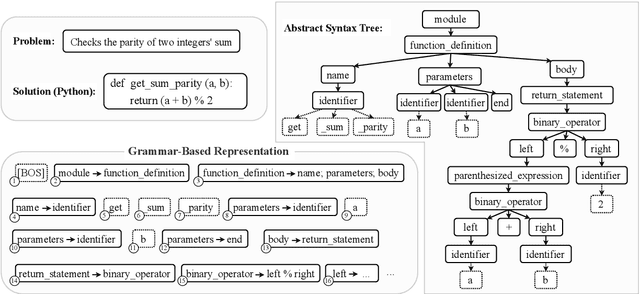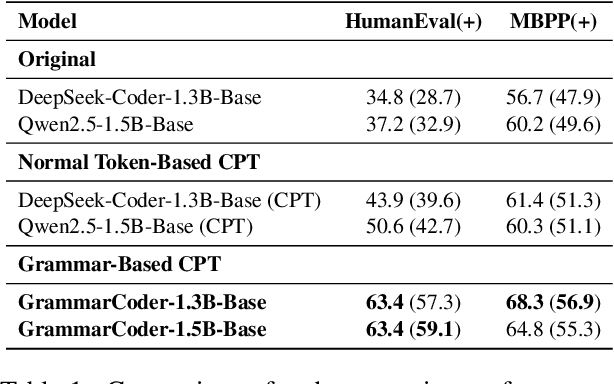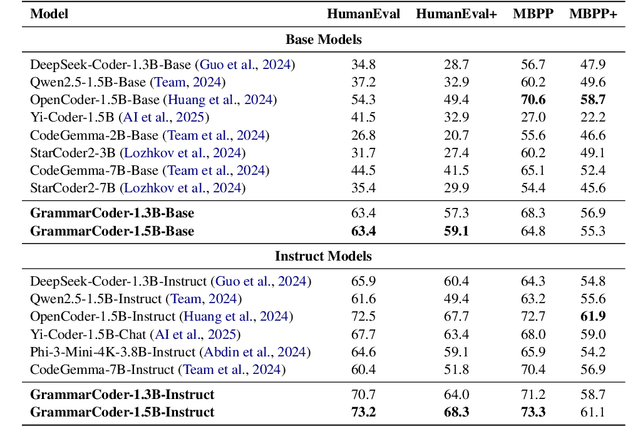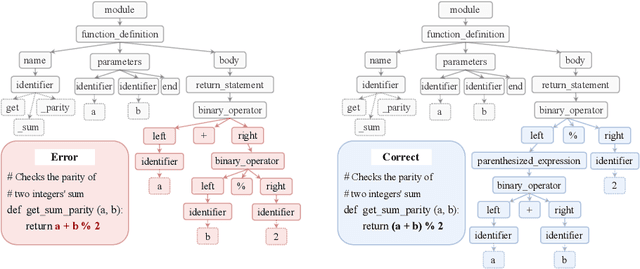Zhao Zhang
Embodied Arena: A Comprehensive, Unified, and Evolving Evaluation Platform for Embodied AI
Sep 18, 2025Abstract:Embodied AI development significantly lags behind large foundation models due to three critical challenges: (1) lack of systematic understanding of core capabilities needed for Embodied AI, making research lack clear objectives; (2) absence of unified and standardized evaluation systems, rendering cross-benchmark evaluation infeasible; and (3) underdeveloped automated and scalable acquisition methods for embodied data, creating critical bottlenecks for model scaling. To address these obstacles, we present Embodied Arena, a comprehensive, unified, and evolving evaluation platform for Embodied AI. Our platform establishes a systematic embodied capability taxonomy spanning three levels (perception, reasoning, task execution), seven core capabilities, and 25 fine-grained dimensions, enabling unified evaluation with systematic research objectives. We introduce a standardized evaluation system built upon unified infrastructure supporting flexible integration of 22 diverse benchmarks across three domains (2D/3D Embodied Q&A, Navigation, Task Planning) and 30+ advanced models from 20+ worldwide institutes. Additionally, we develop a novel LLM-driven automated generation pipeline ensuring scalable embodied evaluation data with continuous evolution for diversity and comprehensiveness. Embodied Arena publishes three real-time leaderboards (Embodied Q&A, Navigation, Task Planning) with dual perspectives (benchmark view and capability view), providing comprehensive overviews of advanced model capabilities. Especially, we present nine findings summarized from the evaluation results on the leaderboards of Embodied Arena. This helps to establish clear research veins and pinpoint critical research problems, thereby driving forward progress in the field of Embodied AI.
NTIRE 2025 Image Shadow Removal Challenge Report
Jun 18, 2025Abstract:This work examines the findings of the NTIRE 2025 Shadow Removal Challenge. A total of 306 participants have registered, with 17 teams successfully submitting their solutions during the final evaluation phase. Following the last two editions, this challenge had two evaluation tracks: one focusing on reconstruction fidelity and the other on visual perception through a user study. Both tracks were evaluated with images from the WSRD+ dataset, simulating interactions between self- and cast-shadows with a large number of diverse objects, textures, and materials.
CreatiPoster: Towards Editable and Controllable Multi-Layer Graphic Design Generation
Jun 12, 2025Abstract:Graphic design plays a crucial role in both commercial and personal contexts, yet creating high-quality, editable, and aesthetically pleasing graphic compositions remains a time-consuming and skill-intensive task, especially for beginners. Current AI tools automate parts of the workflow, but struggle to accurately incorporate user-supplied assets, maintain editability, and achieve professional visual appeal. Commercial systems, like Canva Magic Design, rely on vast template libraries, which are impractical for replicate. In this paper, we introduce CreatiPoster, a framework that generates editable, multi-layer compositions from optional natural-language instructions or assets. A protocol model, an RGBA large multimodal model, first produces a JSON specification detailing every layer (text or asset) with precise layout, hierarchy, content and style, plus a concise background prompt. A conditional background model then synthesizes a coherent background conditioned on this rendered foreground layers. We construct a benchmark with automated metrics for graphic-design generation and show that CreatiPoster surpasses leading open-source approaches and proprietary commercial systems. To catalyze further research, we release a copyright-free corpus of 100,000 multi-layer designs. CreatiPoster supports diverse applications such as canvas editing, text overlay, responsive resizing, multilingual adaptation, and animated posters, advancing the democratization of AI-assisted graphic design. Project homepage: https://github.com/graphic-design-ai/creatiposter
DeformCL: Learning Deformable Centerline Representation for Vessel Extraction in 3D Medical Image
Jun 06, 2025Abstract:In the field of 3D medical imaging, accurately extracting and representing the blood vessels with curvilinear structures holds paramount importance for clinical diagnosis. Previous methods have commonly relied on discrete representation like mask, often resulting in local fractures or scattered fragments due to the inherent limitations of the per-pixel classification paradigm. In this work, we introduce DeformCL, a new continuous representation based on Deformable Centerlines, where centerline points act as nodes connected by edges that capture spatial relationships. Compared with previous representations, DeformCL offers three key advantages: natural connectivity, noise robustness, and interaction facility. We present a comprehensive training pipeline structured in a cascaded manner to fully exploit these favorable properties of DeformCL. Extensive experiments on four 3D vessel segmentation datasets demonstrate the effectiveness and superiority of our method. Furthermore, the visualization of curved planar reformation images validates the clinical significance of the proposed framework. We release the code in https://github.com/barry664/DeformCL
FCKT: Fine-Grained Cross-Task Knowledge Transfer with Semantic Contrastive Learning for Targeted Sentiment Analysis
May 28, 2025Abstract:In this paper, we address the task of targeted sentiment analysis (TSA), which involves two sub-tasks, i.e., identifying specific aspects from reviews and determining their corresponding sentiments. Aspect extraction forms the foundation for sentiment prediction, highlighting the critical dependency between these two tasks for effective cross-task knowledge transfer. While most existing studies adopt a multi-task learning paradigm to align task-specific features in the latent space, they predominantly rely on coarse-grained knowledge transfer. Such approaches lack fine-grained control over aspect-sentiment relationships, often assuming uniform sentiment polarity within related aspects. This oversimplification neglects contextual cues that differentiate sentiments, leading to negative transfer. To overcome these limitations, we propose FCKT, a fine-grained cross-task knowledge transfer framework tailored for TSA. By explicitly incorporating aspect-level information into sentiment prediction, FCKT achieves fine-grained knowledge transfer, effectively mitigating negative transfer and enhancing task performance. Experiments on three datasets, including comparisons with various baselines and large language models (LLMs), demonstrate the effectiveness of FCKT. The source code is available on https://github.com/cwei01/FCKT.
CreatiDesign: A Unified Multi-Conditional Diffusion Transformer for Creative Graphic Design
May 25, 2025Abstract:Graphic design plays a vital role in visual communication across advertising, marketing, and multimedia entertainment. Prior work has explored automated graphic design generation using diffusion models, aiming to streamline creative workflows and democratize design capabilities. However, complex graphic design scenarios require accurately adhering to design intent specified by multiple heterogeneous user-provided elements (\eg images, layouts, and texts), which pose multi-condition control challenges for existing methods. Specifically, previous single-condition control models demonstrate effectiveness only within their specialized domains but fail to generalize to other conditions, while existing multi-condition methods often lack fine-grained control over each sub-condition and compromise overall compositional harmony. To address these limitations, we introduce CreatiDesign, a systematic solution for automated graphic design covering both model architecture and dataset construction. First, we design a unified multi-condition driven architecture that enables flexible and precise integration of heterogeneous design elements with minimal architectural modifications to the base diffusion model. Furthermore, to ensure that each condition precisely controls its designated image region and to avoid interference between conditions, we propose a multimodal attention mask mechanism. Additionally, we develop a fully automated pipeline for constructing graphic design datasets, and introduce a new dataset with 400K samples featuring multi-condition annotations, along with a comprehensive benchmark. Experimental results show that CreatiDesign outperforms existing models by a clear margin in faithfully adhering to user intent.
Contrastive Learning Guided Latent Diffusion Model for Image-to-Image Translation
Mar 26, 2025Abstract:The diffusion model has demonstrated superior performance in synthesizing diverse and high-quality images for text-guided image translation. However, there remains room for improvement in both the formulation of text prompts and the preservation of reference image content. First, variations in target text prompts can significantly influence the quality of the generated images, and it is often challenging for users to craft an optimal prompt that fully captures the content of the input image. Second, while existing models can introduce desired modifications to specific regions of the reference image, they frequently induce unintended alterations in areas that should remain unchanged. To address these challenges, we propose pix2pix-zeroCon, a zero-shot diffusion-based method that eliminates the need for additional training by leveraging patch-wise contrastive loss. Specifically, we automatically determine the editing direction in the text embedding space based on the reference image and target prompts. Furthermore, to ensure precise content and structural preservation in the edited image, we introduce cross-attention guiding loss and patch-wise contrastive loss between the generated and original image embeddings within a pre-trained diffusion model. Notably, our approach requires no additional training and operates directly on a pre-trained text-to-image diffusion model. Extensive experiments demonstrate that our method surpasses existing models in image-to-image translation, achieving enhanced fidelity and controllability.
Bridging Social Psychology and LLM Reasoning: Conflict-Aware Meta-Review Generation via Cognitive Alignment
Mar 21, 2025Abstract:The rapid growth of scholarly submissions has overwhelmed traditional peer review systems, driving the need for intelligent automation to preserve scientific rigor. While large language models (LLMs) show promise in automating manuscript critiques, their ability to synthesize high-stakes meta-reviews, which require conflict-aware reasoning and consensus derivation, remains underdeveloped. Existing methods fail to effectively handle conflicting viewpoints within differing opinions, and often introduce additional cognitive biases, such as anchoring effects and conformity bias.To overcome these limitations, we propose the Cognitive Alignment Framework (CAF), a dual-process architecture that transforms LLMs into adaptive scientific arbitrators. By operationalizing Kahneman's dual-process theory, CAF introduces a three-step cognitive pipeline: review initialization, incremental integration, and cognitive alignment.Empirical validation shows that CAF outperforms existing LLM-based methods, with sentiment consistency gains reaching up to 19.47\% and content consistency improving by as much as 12.95\%.
Layton: Latent Consistency Tokenizer for 1024-pixel Image Reconstruction and Generation by 256 Tokens
Mar 12, 2025



Abstract:Image tokenization has significantly advanced visual generation and multimodal modeling, particularly when paired with autoregressive models. However, current methods face challenges in balancing efficiency and fidelity: high-resolution image reconstruction either requires an excessive number of tokens or compromises critical details through token reduction. To resolve this, we propose Latent Consistency Tokenizer (Layton) that bridges discrete visual tokens with the compact latent space of pre-trained Latent Diffusion Models (LDMs), enabling efficient representation of 1024x1024 images using only 256 tokens-a 16 times compression over VQGAN. Layton integrates a transformer encoder, a quantized codebook, and a latent consistency decoder. Direct application of LDM as the decoder results in color and brightness discrepancies. Thus, we convert it to latent consistency decoder, reducing multi-step sampling to 1-2 steps for direct pixel-level supervision. Experiments demonstrate Layton's superiority in high-fidelity reconstruction, with 10.8 reconstruction Frechet Inception Distance on MSCOCO-2017 5K benchmark for 1024x1024 image reconstruction. We also extend Layton to a text-to-image generation model, LaytonGen, working in autoregression. It achieves 0.73 score on GenEval benchmark, surpassing current state-of-the-art methods. Project homepage: https://github.com/OPPO-Mente-Lab/Layton
Grammar-Based Code Representation: Is It a Worthy Pursuit for LLMs?
Mar 07, 2025



Abstract:Grammar serves as a cornerstone in programming languages and software engineering, providing frameworks to define the syntactic space and program structure. Existing research demonstrates the effectiveness of grammar-based code representations in small-scale models, showing their ability to reduce syntax errors and enhance performance. However, as language models scale to the billion level or beyond, syntax-level errors become rare, making it unclear whether grammar information still provides performance benefits. To explore this, we develop a series of billion-scale GrammarCoder models, incorporating grammar rules in the code generation process. Experiments on HumanEval (+) and MBPP (+) demonstrate a notable improvement in code generation accuracy. Further analysis shows that grammar-based representations enhance LLMs' ability to discern subtle code differences, reducing semantic errors caused by minor variations. These findings suggest that grammar-based code representations remain valuable even in billion-scale models, not only by maintaining syntax correctness but also by improving semantic differentiation.
 Add to Chrome
Add to Chrome Add to Firefox
Add to Firefox Add to Edge
Add to Edge